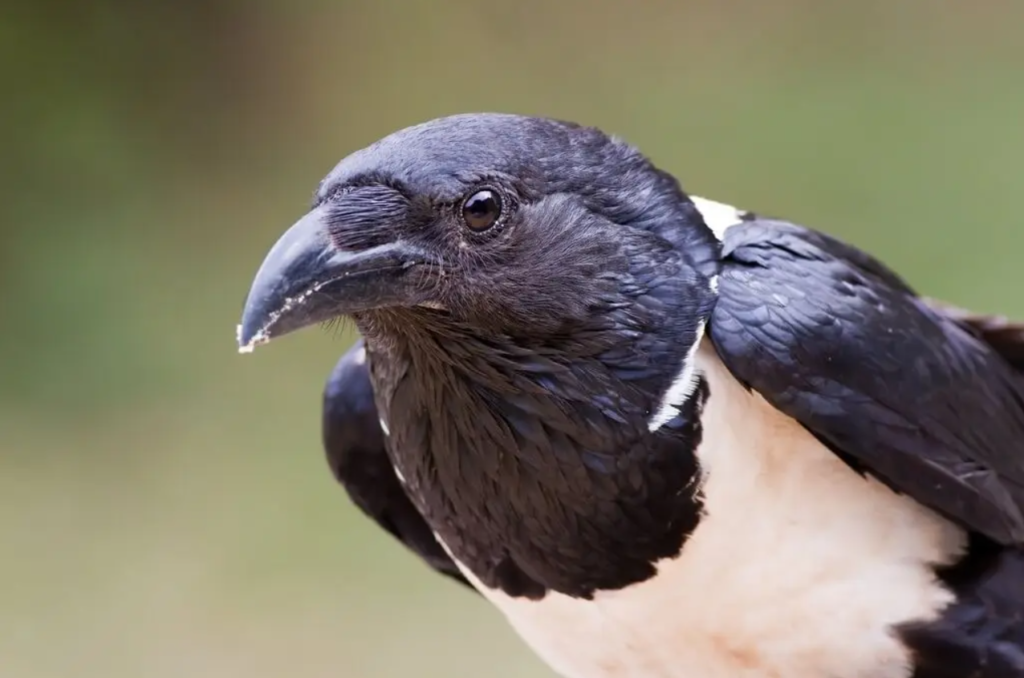
The African Pied Crow (Corvus albus) is not just another bird; it is a fascinating creature known for its remarkable intelligence and adaptability. Spanning various habitats across sub-Saharan Africa, this crow species has intrigued ornithologists and nature enthusiasts alike with its distinctive appearance, complex social structures, and notable cognitive abilities.
History and Distribution
The African Pied Crow has a long-standing relationship with human populations across Africa. Its adaptability has allowed it to thrive in environments ranging from savannas and woodlands to urban centres and coastal areas. Unlike many other bird species, the African Pied Crow has successfully expanded its range, taking advantage of human-altered landscapes.

Identification
Easily recognized by its contrasting black and white plumage, the African Pied Crow stands out among its avian counterparts. Its head, upper body, wings, and tail are black, while its lower belly and undertail coverts are white. This stark contrast makes it easy to identify even from a distance, distinguishing it from other crow species found in Africa.
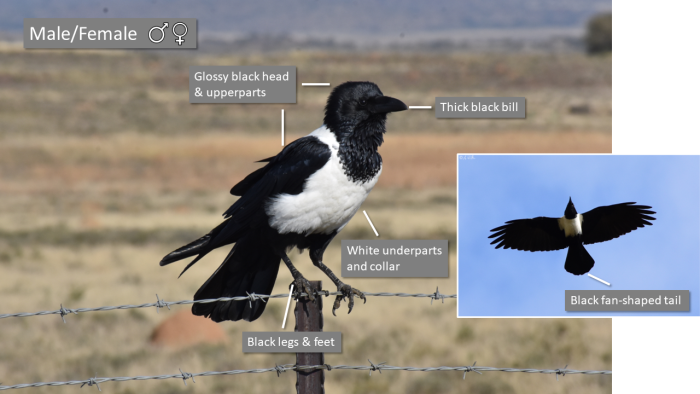
Habitat Preferences
One of the key factors in the African Pied Crow’s success is its ability to thrive in diverse habitats. From open savannas and woodlands to agricultural fields and urban areas, this crow has made itself at home in various environments. In urban settings, it often scavenges for food and takes advantage of human waste, showing a level of resourcefulness that has contributed to its widespread distribution.
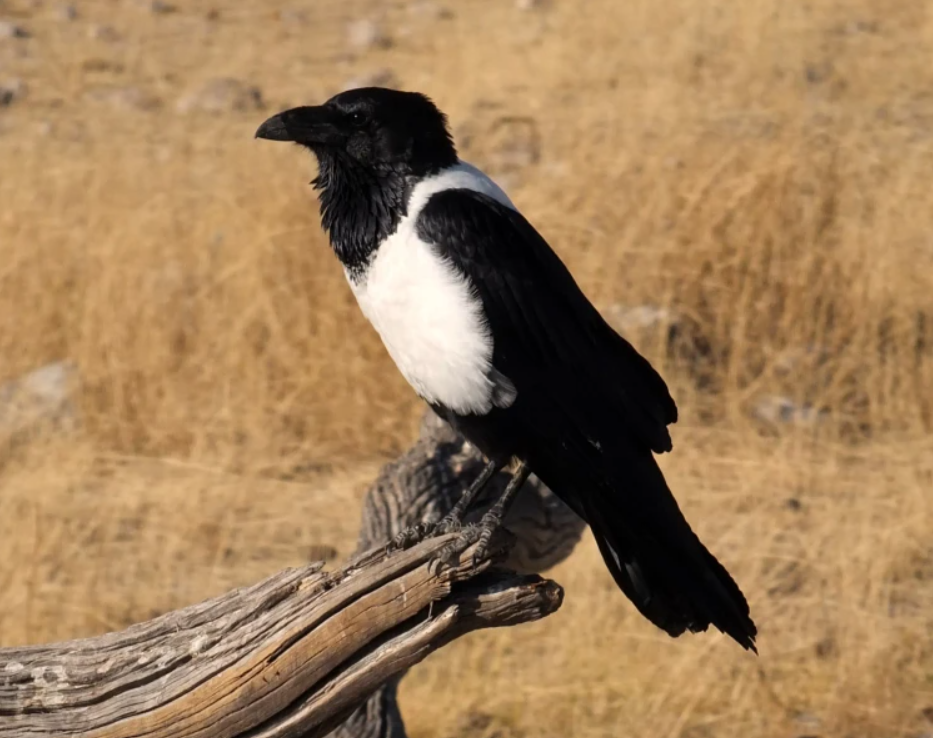
Communal Dynamics
The African Pied Crow is a highly social bird, often seen in pairs or small family groups. Their social structure is complex, with cooperative behaviours that include group foraging and communal roosting. These social interactions are crucial for survival, as they help in sharing resources, protecting against predators, and enhancing overall group cohesion.
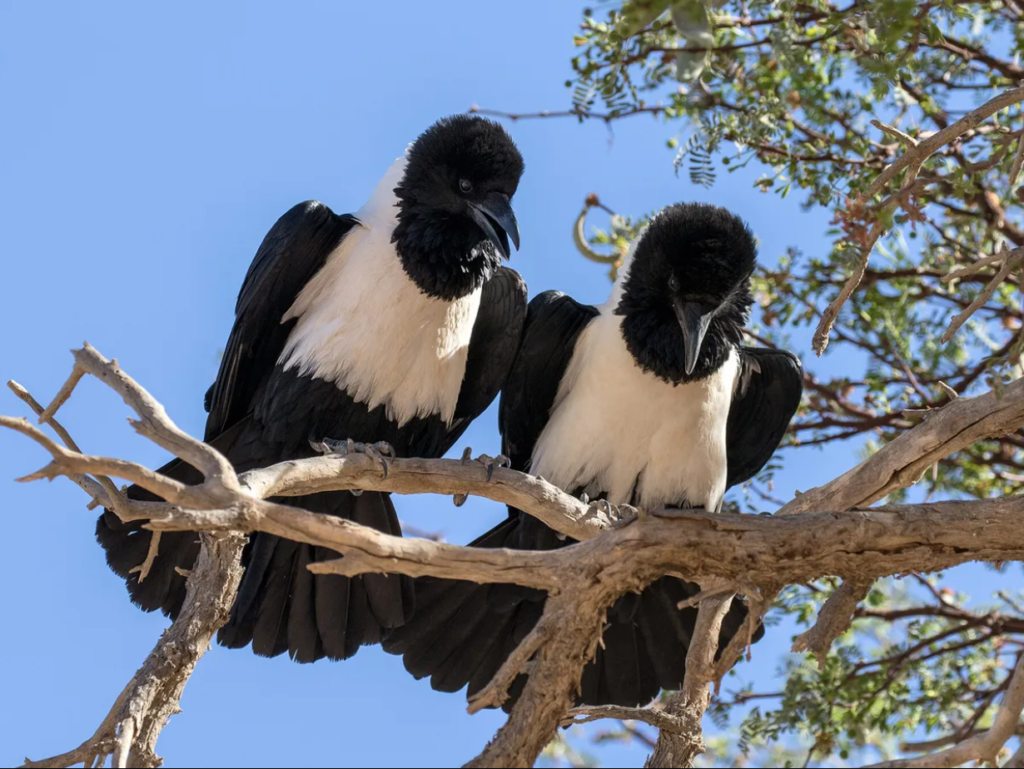
Intelligence and Problem-Solving
Like most crows, pied crows display impressive problem-solving abilities and can employ tools to achieve their goals, such as using rocks or branches to crack open nuts or eggs. They have even been observed placing nuts in front of vehicles and collecting the crushed pieces afterwards.
The intelligence of the African Pied Crow is well-documented and has been the subject of various studies. Like many members of the corvid family, these crows demonstrate advanced problem-solving abilities, use of tools, and even complex communication.
One study by Lefebvre et al. (2004) highlighted the innovative behavior of the African Pied Crow in a series of experiments that tested their ability to solve puzzles and retrieve food from difficult-to-reach places. The crows were observed using sticks as tools to extract insects from crevices and dropping hard-shelled nuts onto roads for cars to crack open.
Another study by Orenstein and Bostwick (2008) explored the crows’ cognitive flexibility, showing how they could adapt their behaviour based on changing conditions. For instance, the crows were able to learn from past experiences and adjust their foraging strategies accordingly, demonstrating a level of intelligence comparable to that of great apes.
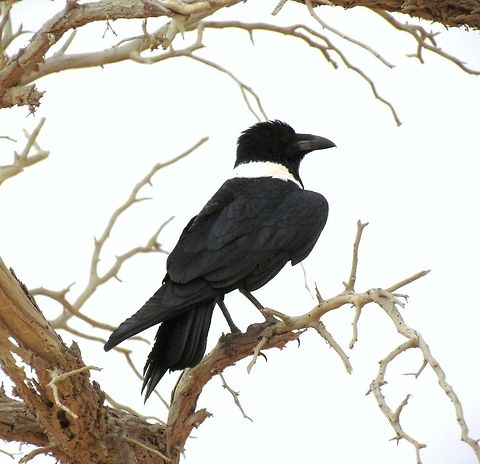
Breeding Behaviour
Breeding typically takes place during the dry season when food is abundant. African Pied Crows build large nests made of sticks, lined with grass, feathers, and other soft materials. These nests are often located in tall trees or on man-made structures like buildings or telephone poles. The species is monogamous, with both parents actively participating in nest-building, incubation, and caring for the young.
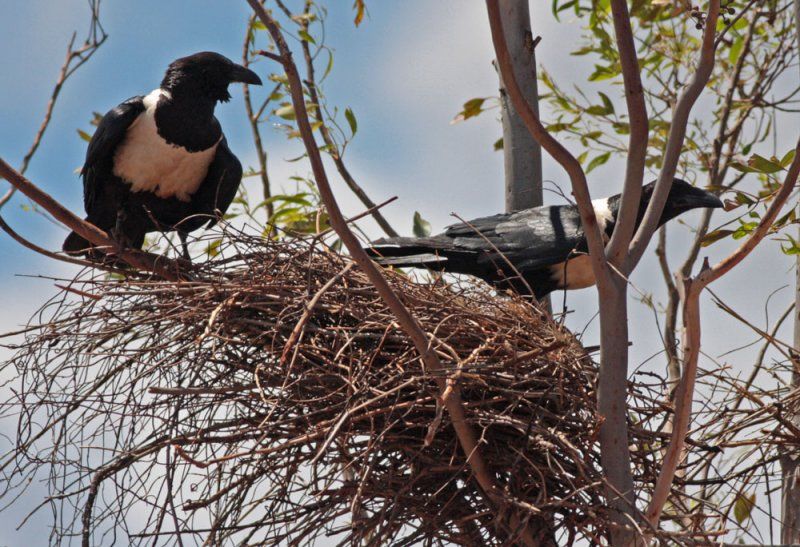

Conclusion
The African Pied Crow is a remarkable example of adaptability and intelligence in the avian world. Its ability to thrive in a wide range of habitats, combined with its advanced cognitive abilities, makes it one of the most fascinating bird species in Africa. As research continues to uncover the complexities of their behavior and intelligence, the African Pied Crow serves as a powerful reminder of the intricate connections between wildlife and human environments.
References
- BirdLife International. (2020). Corvus albus. The IUCN Red List of Threatened Species.
- Lefebvre, L., Reader, S. M., & Sol, D. (2004). Brain size, innovation, and the evolution of culture in birds. Animal Behaviour, 68(6), 1445-1450.
- Orenstein, R. I., & Bostwick, K. S. (2008). The Cognitive Ecology of African Pied Crows. Ethology, 114(12), 1134-1142.
- Mundy, P., Butchart, D., Ledger, J., & Piper, S. (1992). The conservation of the Pied Crow Corvus albus in Africa. Bird Conservation International, 2(1), 35-47.
- Sinclair, I., & Ryan, P. (2003). Birds of Africa South of the Sahara. Struik Publishers.





![Give A HOOT! [Watch]](https://gracevalleyhaven.co.za/wp-content/uploads/2025/05/Spotty.jpg)

![Going Batty [Watch]](https://gracevalleyhaven.co.za/wp-content/uploads/2024/04/trevor-gerzen-jC8uzTM8PlM-unsplash-1.jpg)
Leave a Reply